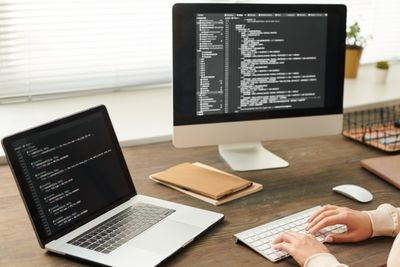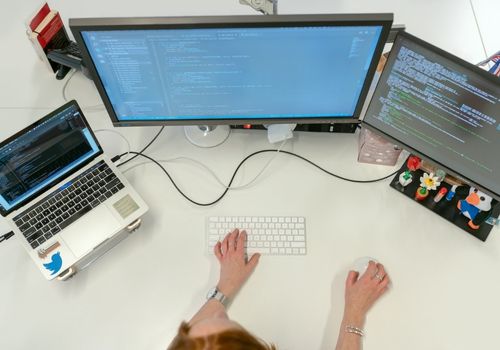
If you can't enter BIOS settings, you may have the Fast Startup feature running in the background. Go to the Control Panel, then head to the 'Change What the Power Key Does' menu to turn it off.
Although Fast Startup can be a useful way to save time, it doesn't allow users to boot order BIOS.
At the same time, the problem can also be due to your CMOS memory being corrupted. A friend asked me about this once. He couldn't boot to BIOS because his CMOS was corrupted. I told him that he could only fix this by resetting his CMOS.
In this article, I have not only discussed how I fixed this but all the other solutions that you can try.
Let's get to it.
Contents
There are many ways to fix the system BIOS error problem, and they include:

Fast Startup is a Windows 10 and 11 feature that reduces the time it takes to load your operating system. I like using it; however, it's known to prevent BIOS from loading.
You'll have to disable it if you want to boot the order BIOS screen. It only takes a few easy steps to do this:
Now see if you can access BIOS once your computer boots up.
You might not be able to boot to BIOS because you're using an outdated operating system. Fixing this is easy. All you have to do is download the latest OS version. Just keep in mind that you need a stable internet connection first, or else the download will take forever.
Here's how you update Windows and fix the PC system BIOS:
To enable automatic updates:
Also, ensure that you regularly need to update your device drivers. They can cause some serious BIOS error messages unless they're running the latest firmware.
There are 2 different ways to update your drivers. You can either do it the manual way through the Device Manager or through a third-party tool, like the Avast Updater.
Here's method 1 to fix your BIOS drivers:
Here's method 2 to help you access BIOS again:

You might not be able to access BIOS because of the peripherals that you've connected. For whatever reason, there might be a hardware conflict causing them to act up.
To fix this:
Your CMOS/BIOS chip is important, as this is the memory that stores your BIOS software. No surprise, your BIOS won't load properly if something has gone wrong with it.
To fix this, you'll have to reset the chip. You can do this by removing your computer's BIOS battery.
Here's what you do:
Also, if you're going to reset your BIOS, keep in mind that it's perfectly safe. You might have been a bit apprehensive about this fix when I first mentioned it, thinking you would lose your data. However, this is not the case. Your PC's BIOS settings would just revert back to their default state.
Another reason your computer system may be refusing to boot BIOS could be that it cannot access your device's memory. You probably have faulty RAM sticks, or they might just not be seated properly.
Here's how Windows users can go ahead and fix a RAM stick:
Your computer can act up and cause all kinds of problems if it overheats. This may be what you're facing, as your CPU fans could either be broken or covered with dust. If this is the case, they won't be able to rotate properly and cool your PC down.
Here's how you fix this:
Lastly, the issue could be due to your BIOS firmware not matching your BIOS chip. They might not be compatible if you happened to update the firmware recently. You should be able to fix this by flashing your BIOS firmware back to the older version.
The steps to follow differ depending on your PC model. So, read this guide to find out what to do.
You might be able to work around the issue and get BIOS to load by using your UEFI firmware settings.
Here's what you do:
You should be able to enter the Basic Input Output System menu (BIOS screen).
Answered below are some popular questions.
All you have to do is remove your CMOS battery. Once you remove it, whether it's for around half an hour, reattach it. Your bootstrap loader should reset in the process, which should hopefully get your computer hardware to boot up again.
As mentioned, resetting your BIOS is perfectly safe. Don't worry about losing any important data - a BIOS reset is different from resetting Windows.

There are many reasons why you may not be able to boot order into BIOS. Usually, the issue could be due to having the Fast Startup option enabled. It overrides BIOS and causes an error message when you try to load it.
At the same time, the BIOS loads problem could be due to your computer system being outdated, your BIOS battery being corrupt, or having loose RAM sticks.
If you can't enter the BIOS boot process with any of my fixes, you can work around whatever is causing the problem, and use UEFI to force BIOS to start.
Hopefully, you found everything discussed useful and are able to fix any BIOS boot problems.
